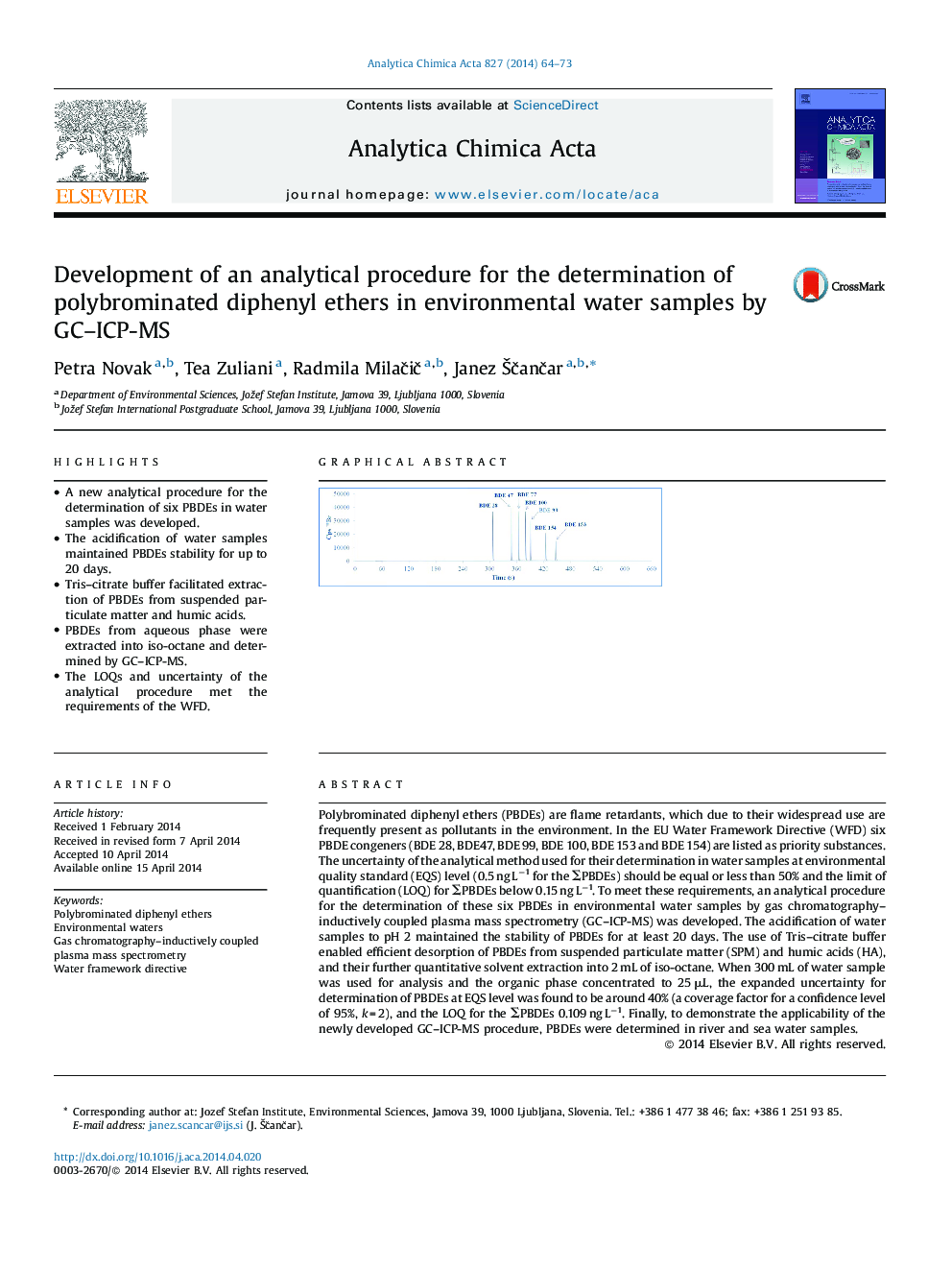| Article ID | Journal | Published Year | Pages | File Type |
|---|---|---|---|---|
| 1164059 | Analytica Chimica Acta | 2014 | 10 Pages |
•A new analytical procedure for the determination of six PBDEs in water samples was developed.•The acidification of water samples maintained PBDEs stability for up to 20 days.•Tris–citrate buffer facilitated extraction of PBDEs from suspended particulate matter and humic acids.•PBDEs from aqueous phase were extracted into iso-octane and determined by GC–ICP-MS.•The LOQs and uncertainty of the analytical procedure met the requirements of the WFD.
Polybrominated diphenyl ethers (PBDEs) are flame retardants, which due to their widespread use are frequently present as pollutants in the environment. In the EU Water Framework Directive (WFD) six PBDE congeners (BDE 28, BDE47, BDE 99, BDE 100, BDE 153 and BDE 154) are listed as priority substances. The uncertainty of the analytical method used for their determination in water samples at environmental quality standard (EQS) level (0.5 ng L−1 for the ΣPBDEs) should be equal or less than 50% and the limit of quantification (LOQ) for ΣPBDEs below 0.15 ng L−1. To meet these requirements, an analytical procedure for the determination of these six PBDEs in environmental water samples by gas chromatography–inductively coupled plasma mass spectrometry (GC–ICP-MS) was developed. The acidification of water samples to pH 2 maintained the stability of PBDEs for at least 20 days. The use of Tris–citrate buffer enabled efficient desorption of PBDEs from suspended particulate matter (SPM) and humic acids (HA), and their further quantitative solvent extraction into 2 mL of iso-octane. When 300 mL of water sample was used for analysis and the organic phase concentrated to 25 μL, the expanded uncertainty for determination of PBDEs at EQS level was found to be around 40% (a coverage factor for a confidence level of 95%, k = 2), and the LOQ for the ΣPBDEs 0.109 ng L−1. Finally, to demonstrate the applicability of the newly developed GC–ICP-MS procedure, PBDEs were determined in river and sea water samples.
Graphical abstractFigure optionsDownload full-size imageDownload as PowerPoint slide
